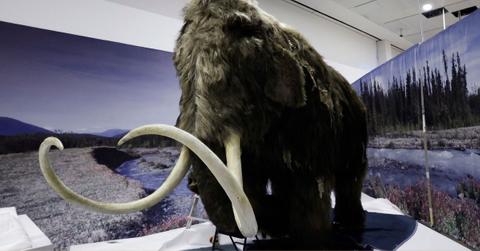Going De-Extinct: Scientists on Siberian Project Claim Return of Woolly Mammoth Possible in Three Years

Several labs are researching ways to bring the woolly mammoth back from extinction.
Jan. 14 2024, Published 9:02 a.m. ET
While certain researchers in Russia are engaged in strategies to defeat Ukraine, another group is dedicated to a scientific endeavor — the potential resurrection of an extinct species.
An ongoing project in northern Siberia aims to revive a massive creature from the past, and a laboratory website insists: "We will have the Woolly Mammoth alive again."
The site suggests this ambitious goal may be realized within approximately three years.
However, the resurrected being reportedly won't be an exact replica but will possess the appearance, movements and sounds reminiscent of a Woolly Mammoth, as explained by Colossal Laboratories and Biosciences.
The initial phase of this "de-extinction" initiative revolves around the examination of DNA. Scientists claim to have identified genes from the woolly mammoth preserved in Siberia's permafrost.
The plan is to amass sufficient DNA samples and create a sequenced genome. Subsequently, they aim to insert these artificially created genes into an Asian elephant, recognized as the mammoth's closest living relative.
The ultimate objective, as reported by Discover Magazine, is the development of a "hybrid" mammoth-elephant embryo, which could potentially be implanted into a mother elephant.
- From Extinction to Conservation: Inside the Remarkable Return of Kenya's Giant Ground Pangolin After 47 Years
- Putin's Prized Predators: Russia's Endangered Amur Tigers Causing Havoc After Relocation Effort
- What Lies Beneath: NASA Scientist Believes Aliens May Have Found 'Perfect' Hiding Spot in Earth's Oceans
Similar instances of revival from frozen states have been observed on a smaller scale. Canadian scientists observed moss growing at the base of a glacier in northwest Greenland, dormant for 400 years before revival.
In Britain, scientists successfully regenerated moss extracted from the permafrost of Antarctica, dating back over 1,500 years. Japanese researchers brought single-cell plankton out of a 30-year deep-freeze in Antarctica, achieving successful reproduction.
Never miss a story — sign up for the Front Page Detectives newsletter. Be on the scene the moment news breaks.
In Dec. 2023, Knewz.com reported on a Dallas company attempting to resurrect the Tasmanian tiger, showcasing a trend of frozen experimentation reminiscent of unusual cases, such as that of baseball legend Ted Williams, whose body was cryogenically preserved for potential future revival.
Beyond the revival aspect, the Colossal project has broader objectives, including addressing climate change. The Colossal website emphasizes the need to "decelerate melting of the arctic permafrost" at the top of its list.
Scientists believe the permafrost conceals significant amounts of greenhouse gases, estimating a potential annual release of "up to 600 million tons of net carbon."
While the scientists hypothesize a connection between climate change and genetic science, they acknowledge the absence of concrete proof.
Become a Front Page Detective
Sign up to receive breaking
Front Page Detectives
news and exclusive investigations.
